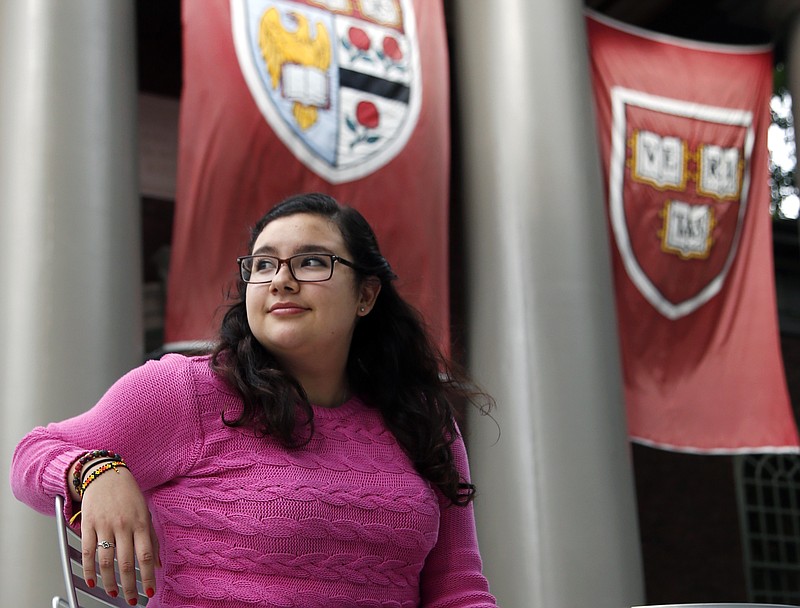MIAMI-Dorothy Villarreal grew up dreaming in Spanish, first in Mexico and later in South Texas, where her family moved when she was six. She excelled in school-in English. But at home, life was in Spanish, from the long afternoon chats with her grandparents to the Spanish-language version of Barbie magazines she eagerly awaited each month. She figured she was fluent in both languages.
Then the Harvard University junior spent a summer studying in Mexico and realized just how big the gaps in her Spanish were.
"We were talking about the presidential election, and there was so much I wanted to explain," Villarreal said. "We'd end up playing a guessing game where I'd speak in English, and my friends, they'd speak back in Spanish to guess what I was saying."
Villarreal's experience is increasingly common in America, where one in five children grows up in a home where English isn't the sole language. To help them fill in the gaps, universities are adapting their foreign language curriculum, in part to better prepare graduates for a globalized world where it pays to be professionally fluent in more than one language.
Children in multi-lingual homes grow up a step ahead of other would-be language learners. They can easily engage in small talk or follow the latest soap opera in their families' native language. Yet when it comes to meatier topics, or reading and writing, they are stuck.
The linguistic gaps become apparent in high school, where these students can snooze through basic language classes but often drown in more advanced ones-if their heritage language is even offered. After all, how many American high schools offer Arabic or Korean?
With 37 million Spanish-speakers in America, most heritage classes are in Spanish, and courses have bloomed across campuses in California, Florida and several Southwestern states. They have also begun to take hold in schools like Harvard University, which added a course this year.
Villarreal, who hopes to work in Latin America for an international business or for the U.S. government, "and not make a fool of myself," was among the first to sign up. She jumped at the chance to beef up her formal Spanish without the pressure of an advanced class with non-Latino classmates who might have thick accents but rarely misplace an accent mark.
That pressure, and the embarrassment of not being able to read or write a language they are supposed to know, can hold students back in regular classes, said Harvard Professor Maria Luisa Parra Velasco, who created the new Spanish course.
Beyond language, the heritage class offers Villarreal a rare academic space to examine topics she's less comfortable talking about with her mostly white and upper-middleclass peers. She contrasted the heritage class with the course she runs to immediately after: an advanced, general Spanish class on cultural practices of the U.S.-Mexico border. In that class, Villareal said she is uncharacteristically quiet.
Heritage language programs have existed in the U.S. in some form for more than a century as a way to retain both language and culture-even as English-only movements waxed and waned. German schools were common in the late 1800s. Youth in California have long attended weekend Chinese and Japanese programs. Bilingual Spanish classes have been around for decades.
Yet the development of separate heritage language university instruction is relatively new. The University of Texas-Pan American received funding from the Department of Education in 2007 to create a minor in medical Spanish for heritage speakers, and other schools are beginning to replicate the program.

